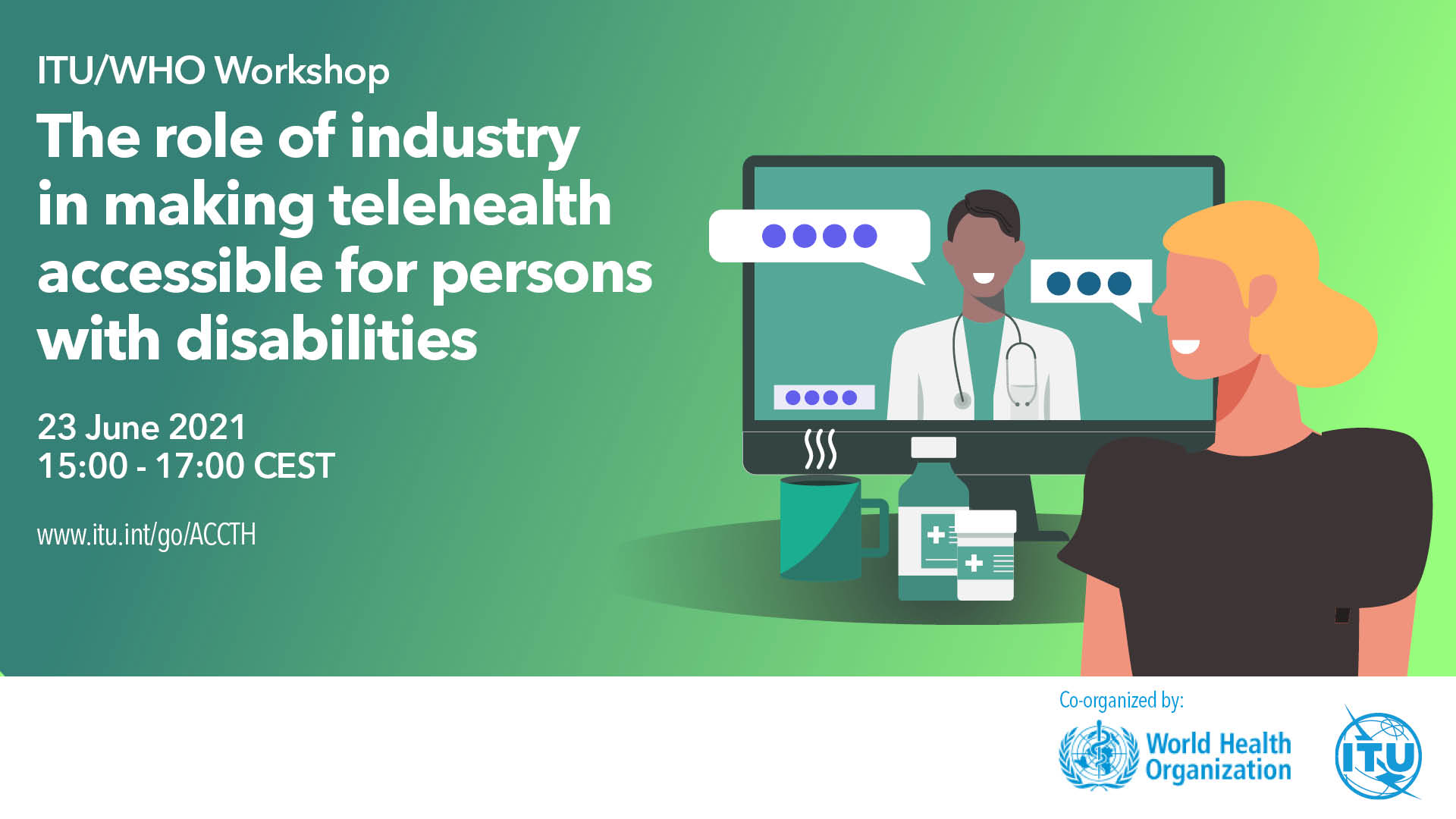
The
International Telecommunication Union (ITU) in collaboration with the
World Health Organisation (WHO) organized a workshop on
"The role of industry in making telehealth accessible for persons with disabilities" which took place virtually on
23 June 2021 from 1500 to 1700 hours Geneva time.During the current COVID-19 pandemic, the use of telehealth services has increased substantially in many countries and telehealth has become a basic need for the general population, especially for those in quarantine, by enabling people to access advice on their health problems in real time through contact with health care providers. In fact, a recent World Health Organization (WHO) report showed that telehealth is the most common modality adopted by countries for service provision during the pandemic. However, due to the lack of standards and guidelines for accessibility of telehealth services, many persons with disabilities experience difficulties accessing and using such services and are often forgotten.
Some of the most common barriers identified by persons with disabilities include:
-
Difficulties that people with vision impairment and blindness face, such as lack of compatibility of online platforms with screen readers or assistive devices like Braille keyboard; lack of colour contrast and screen magnification; inaccessible websites or images.
- Difficulties that hard of hearing or deaf people face, such as lack of captioning, sign language interpretation, or text messaging in the telehealth platform.
- Difficulties that people with speech difficulties face, such as lack of voice synthesizers and text to- speech generators.
- Difficulties that people with mobility issues face, such as challenges with fine motor coordination, e.g., double clicking instead of single clicking, or difficulties scrolling or using menu options to access information.
- Difficulties that people with mental health conditions face, such as lack of safety, privacy and security control.
The common challenges faced by persons with disabilities can be addressed through standardization and regulation. The development of guidelines and standards for telehealth is an important and valuable process to help ensure accessible, effective, and safe delivery of quality healthcare. The WHO and the International Telecommunication Union (ITU) have initiated the development of a
global standard F.ACC-TH for accessibility of telehealth services which is expected to be finalized and published by the end of 2021. The standard will outline requirements on concrete accessibility features that healthcare providers and manufacturers of telehealth platforms need to ensure when delivering telehealth services.
To inform industry on the development of the ITU-WHO global standard on accessibility of telehealth services
To obtain industry's perspective and feedback on the requirements for concrete accessibility features that should be included in the standard.
Participation in the workshop was free of charge and opened to WHO and ITU members, as well as to any individual from a country that is a member of ITU and who wishes to contribute to the work.
Note: Should you have any comments on the
draft recommendation, please contact:
Watch recording here
Program
15:00 - 15:05
|
Welcome Remarks
-
Masahito Kawamori, Rapporteur for ITU-T SG16 Q28/16 "Multimedia Framework for e-Health Applications"
|
15:05 - 15:20
|
Why is a global standard on accessibility of telehealth services needed?
- Alarcos Cieza, Unit Head, Sensory Functions, Disability, and Rehabilitation Unit, WHO
|
15:20 - 15:35
|
The standard in a nutshell
-
Masahito Kawamori, Rapporteur for ITU-T SG16 Q28/16 "Multimedia Framework for e-Health Applications"
-
Kaloyan Kamenov, Technical officer, Disability Programme, WHO
|
15:35 - 16:50
|
Open Discussion
-
Masahito Kawamori, Rapporteur for ITU-T SG16 Q28/16 "Multimedia Framework for e-Health Applications"
|
16:50 - 17:00
|
Closing Remarks
-
Masahito Kawamori, Rapporteur for ITU-T SG16 Q28/16 "Multimedia Framework for e-Health Applications"
|